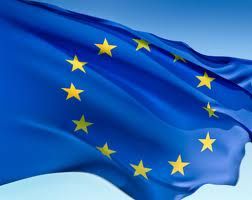
Europe’s proposal to force shipping fleets to cut emissions of sulphur-dioxide gas will only add painful costs to an industry already in tight straights. But tough rules on sulphur,
it seems, really indicates Europe is keen to get its shipping on readily available natural gas, which is forecast to remain plentiful until 2500.
It’s as wily a choice as First Lord of the Admiralty Winston Churchill made 100 years ago, when he took the Royal Navy off of coal and got its warships running on bunker fuel. Burning oil proved decisive in both world wars, as it brought superior ship speed. Britain’s enemies had little of the stuff.
The trouble is, natural gas engines can emit 90 per cent pure, unburned methane, a greenhouse gas 11 times more potent than carbon-dioxide. Switching to natural gas will dramatically cut carbon-dioxide but increase methane.
There are already signs the industry itself realizes methane, and not sulphur, is the pollutant to target. An earlier costly initiative -- switching to natural gas engines in some ships -- proved it cut sulphur and carbon dioxide but released pure methane into the atmosphere.
Under the new rules, the maximum sulphur content of fuels will drop 90 per cent to 0.1 per cent from 1.5 per cent in populous areas like the Baltic Sea, the Mediterranean Sea and the English Channel (and down from 4.5 per cent to 0.5 per cent in 2020 for all other areas).
The industry had anticipated the fuel standard for sulphur, and had partly embarked on using natural gas as a fuel ahead of 2015, the start of enforcement. Europe’s involvement, however, appears to signal a strategic switch to safe supplies of gas, with cutting sulphur as the chief sales and enforcement point.
Judging by Europe’s mercantile history and the wording of treaties dating back 200 years, the shipping industry is gambling that if gas is a standard for cleanliness set at the highest levels, then low-cost competitors not burning gas aboard ship might one day be excluded from plying key sea routes.
Liquefied natural gas propulsion now powers offshore service ships, European ferries, “short-shipping” -- or regional cargo carriers in service to get trucks off roads -- and carriers of liquefied natural gas, or LNG, as a cargo. Some 40 vessels, plus as many LNG carriers, are now driven by natural gas.
As always for Europe, there’ll be advantage for the Continent’s new gas-powered engine makers and fleets. Some, like propulsion experts Wartsila, are set to offer a new generation of LNG engines in which methane emissions are greatly reduced. Rolls-Royce, too, boasts “cleaner” LNG engines in the works.
Source: Globe and Mail
We use cookies to improve your experience. By continuing to use our site, you accept our Cookies, Privacy Policy,Terms and Conditions. Close X